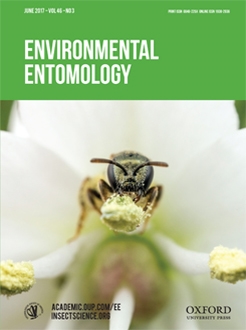Knowledge about the prey preference of polyphagous predators is important for determining their ability to suppress pest insects. Tetranychus truncatus (Tetranychidae), Tetranychus turkestani (Tetranychidae), and Thrips tabaci (Thripidae) often coexist in crops. Neoseiulus bicaudus (Wainstein) is a native predatory mite that was recently observed in the Xinjiang Uygur Autonomous Region of northwest China. The objective of this study was to assess the potential of N. bicaudus as a bio-control agent against the three pest species mentioned above. The results showed that N. bicaudus protonymphs, deutonymphs, and adults can be effective biological control agents for the three pest species. Neoseiulus bicaudus at all three developmental stages exhibited a Holling's Type II (convex) functional response to the prey. Neoseiulus bicaudus exhibited no preference between T. truncatus adults and T. turkestani adults, irrespective of the prey ratio. In comparison, N. bicaudus clearly preferred first-instar T. tabaci larvae to T. turkestani adults. The results of this study suggest that N. bicaudus could help control T. truncatus, T. turkestani, and T. tabaci. Among these pests, N. bicaudus may be most effective for first-instar T. tabaci.
How to translate text using browser tools
8 April 2017
Functional Response and Prey Preference of Neoseiulus bicaudus (Mesostigmata: Phytoseiidae) to Three Important Pests in Xinjiang, China
Yan-Nan Zhang,
Jue-Ying-Qi Jiang,
Yi-Jing Zhang,
Ye Qiu,
Jian-Ping Zhang
ACCESS THE FULL ARTICLE
It is not available for individual sale.
This article is only available to subscribers.
It is not available for individual sale.
It is not available for individual sale.

Environmental Entomology
Vol. 46 • No. 3
June 2017
Vol. 46 • No. 3
June 2017
predator
Prey preference
Tetranychus truncatus
Tetranychus turkestani
Thrips tabaci




